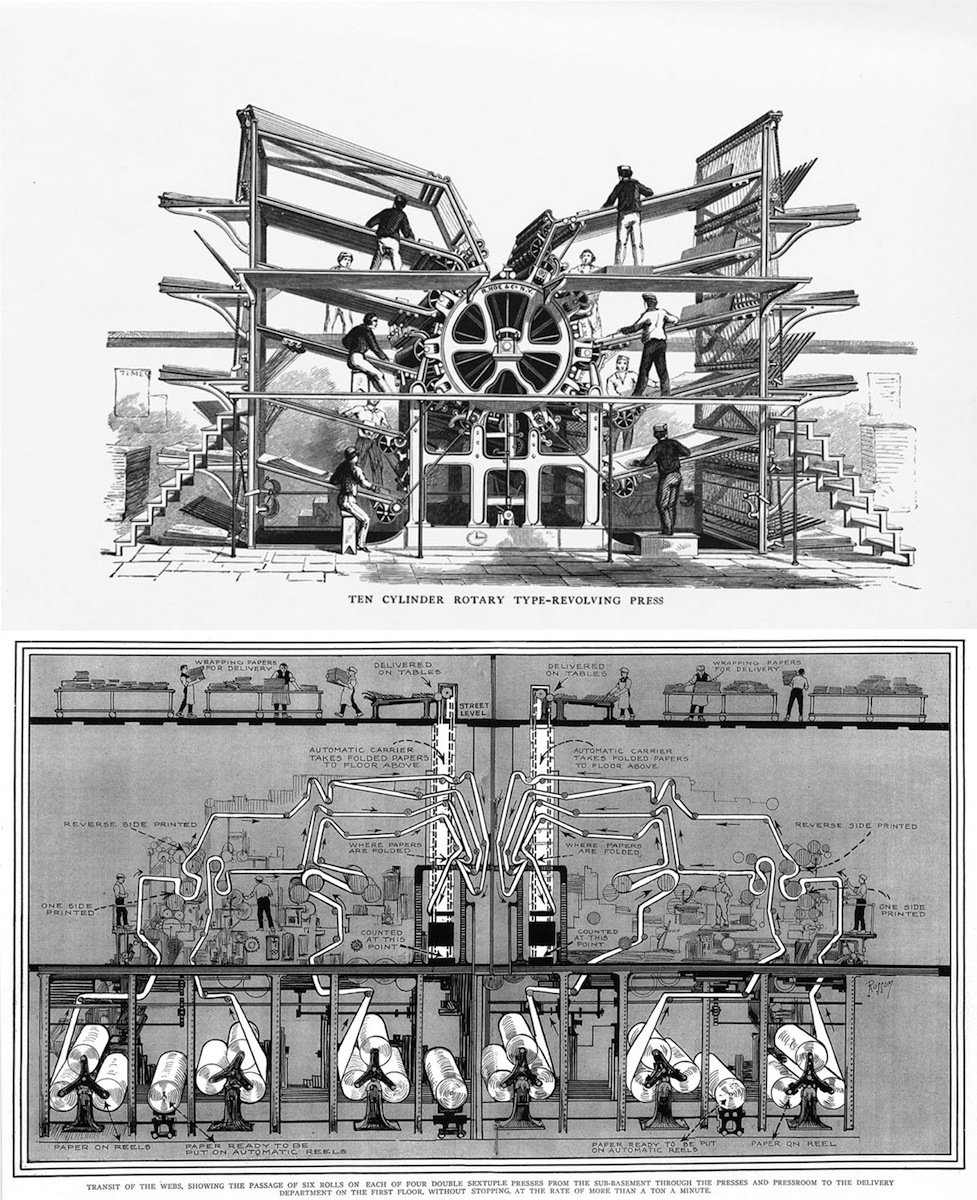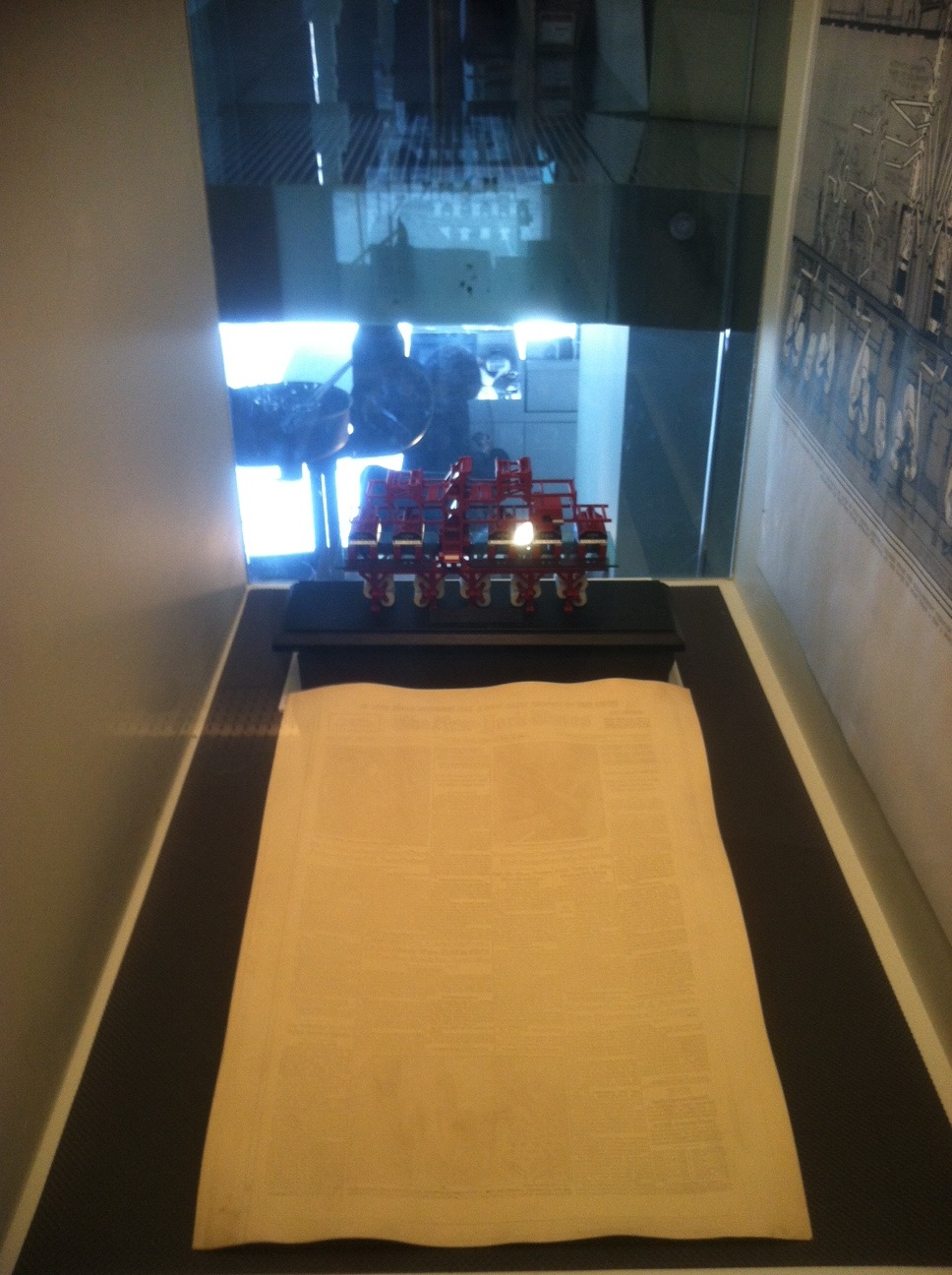The Skyscraper Museum is devoted to the study of high-rise building, past, present, and future. The Museum explores tall buildings as objects of design, products of technology, sites of construction, investments in real estate, and places of work and residence. This site will look better in a browser that supports web standards, but it is accessible to any browser or Internet device.
PAPER - METAL - PAPER

"Ten Cylinder Rotary Type-Revolving Press." Robert Hoe, A Short History of the Printing Press, 1902, p. 35.
Collection of The Skyscraper Museum and The Times Annex, 1913. Courtesy of The New York Times Company.
Papier-m�ch� molds, also known as mats or flongs, were produced in newspaper composing rooms. Once the composers had laid out a page using a linotype machine, they pounded layers of paper and glue into the metal type to create a mold. The pliable flong was then transferred to the stereotyping department, where workers steam-pressed it onto a curved cylinder and injected molten lead against it to form a curved lead plate.
Once cooled and trimmed, this stereoplate was attached to a press cylinder. A duplicate flong could be stored for later use, requiring far less space than a tray of type or a curved metal plate.

The paper mat on display here is on loan from New York Times reporter David Dunlap, to whom it was given as a souvenir of his first bylined front-page photograph. The July 2, 1978 edition that this mat helped produce was the last at the Times to use linotypes, mats, and lead cylinders. A new cold-type process using computers and thin plastic plates was introduced the next day.
This model, on loan from Allan M. Siegal, represents a five-unit double-wide press in use until 1997, the year the Times ceased printing at 229 West 43rd Street.
The graphics at right represent two eras in printing: an R. Hoe press shows the mid-19th century process of feeding individual sheets manually, while the diagram of the presses in the Times Annex shows the paper path used by advanced web-fed presses in the early 20th century.
